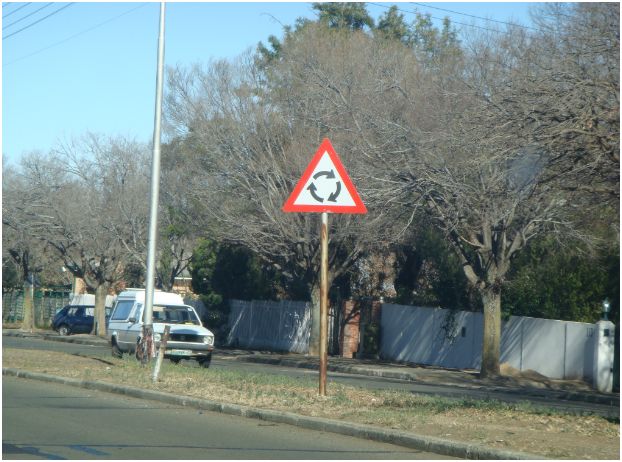We would like to share the comments from Steve – a concerned motorist – and provide some info on traffic circles and driving in South Africa:
Message:
——–
The whole idea of roundabouts and traffic circles is to obtain a safer intersection than any other,whilst allowing traffic to flow. Often it will be unnecessary to stop at a traffic circle.
This is possible because of a rule that says simply ‘GIVE WAY TO THE RIGHT”. At least that is the case in the UK. However in SA we had to change that rule to read “GIVE WAY TO OTHER VEHICLES THAT CROSS ANY YIELD SIGN BEFORE YOU” . This means you have to look all ways , not just to the right. Also, who goes first when everyone arrives at the same time ?? This thoughtless rule needs to be changed, and hopefully before thousands of foreign visitors come to the FIFA World Cup ; imagine the confusion !!!!
Response
In SA there are two types of traffic circles: a mini-circle and a roundabout. (The roundabout, however, is still called a ‘traffic circle’ and often still shows the old traffic circle sign, which is now called a mini-circle sign. So that kicks off the confusion before anything else!)
But if we consider the situation carefully, it is not all that confusing.
The key thing to appreciate is that: there are two types of traffic circles, and the rules are different for each kind of traffic circle.
A mini-circle is very similar to a 4-Way Stop, with similar rules, except the Stop intersection has Stop lines and the Mini-circle intersection has Yield lines. With both these types of intersections the driver must give way to any other vehicle that reaches/crosses such a line before him.
So, to summarize, the differences between a 4-Way Stop and a Mini-circle are essentially as follows:
• At a mini-circle there is a small island hump in the middle of the intersection that the driver must go around and not drive over. A 4-way Stop does not have this.
• At a 4-way Stop the line is a solid Stop line. At a mini-circle it is a broken Yield line.
Other than those differences the two types of intersections are quite similar in size and design.
A roundabout is different from both the above. It has a large circle that drivers most drive around in a clockwise direction, giving way to any vehicle approaching from the right that is close enough to pose a danger.
One point that Steve mentions – which the above comments will hopefully clarify – is that for a mini-circle it is pretty easy to see who will cross a line before you, because the intersection is small enough to be able to see all the front vehicles right there, virtually in front of you, like at any 4-Way Stop intersection. With a (large) roundabout, that rule about who crosses a line first does not apply. The roundabout rule is similar to the UK rule Steve mentions.
Below is more info from the Arrive Alive Website http://www.arrivealive.co.za/pages.aspx?i=2163
=======================
The rules for traffic circles in South Africa are as follows:
Mini-circles
Slow down and give way to other vehicles that cross any Yield line before you do.
Proceed in a clockwise direction around the painted island, without driving on it.
In the words of the official legislation:
Indicates to the driver of a vehicle approaching a mini circle that he or she shall yield right of way to any vehicle which will cross any yield line at such junction before him or her and which, in the normal course of events, will cross the path of such driver’s vehicle and that the driver shall move in a clockwise direction within such junction and attempt not to encroach on the mini-circle.
Roundabouts
You must obey traffic circle rules at the roundabout.
In the words of the official legislation:
Indicates to the driver of a vehicle that he or she shall move in a clockwise direction at the junction ahead and he or she shall yield right of way to traffic approaching from the right, within the roundabout, where such vehicles are so close as to constitute a danger or potential danger.
